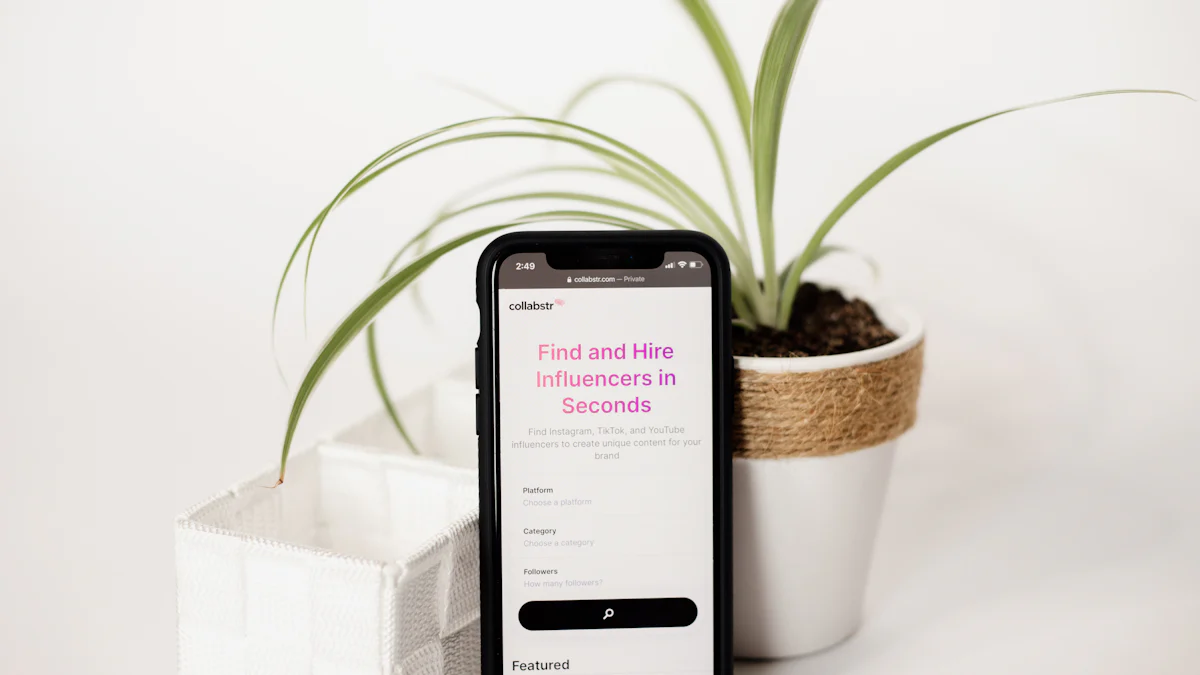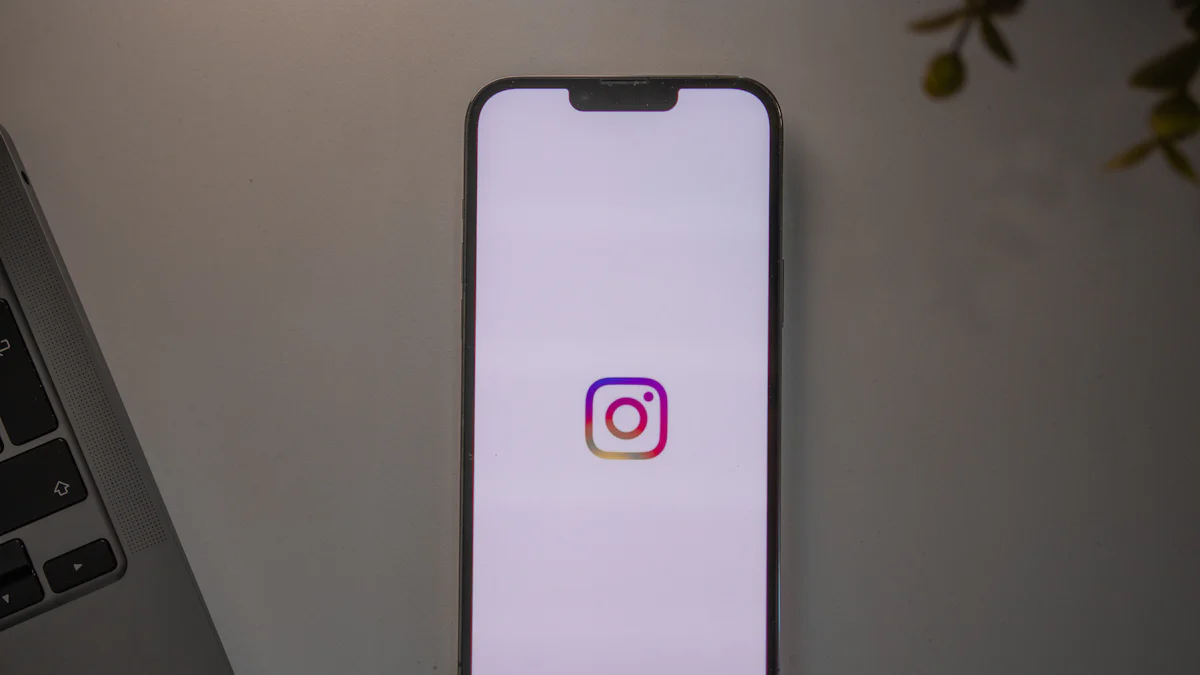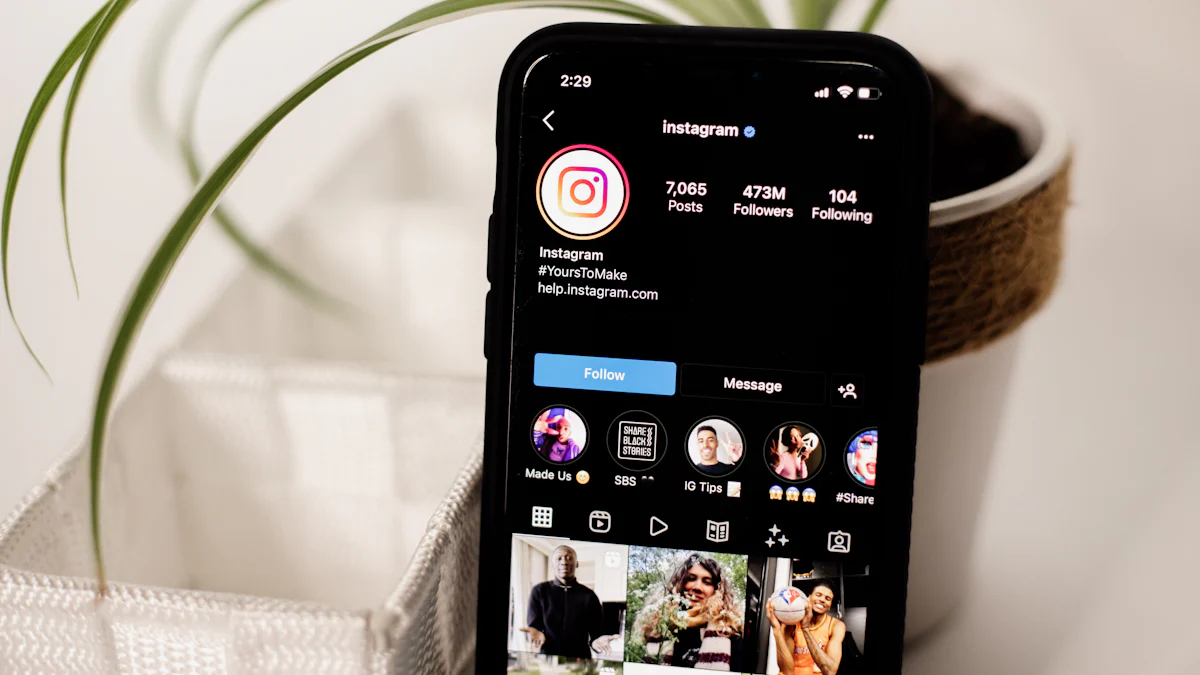The Definitive Guide to Implementing Product Seeding Strategies

Product seeding is a clever marketing tactic where you send free products to influencers or potential customers. You hope they’ll share their experiences and promote your brand. This strategy has become a game-changer in modern marketing. Why? Because it effectively raises awareness and boosts sales. In fact, 92% of marketers agree that product seeding drives business awareness. Plus, businesses often make $6.50 for every $1 spent on influencer marketing. By choosing the right influencers, you can expose your products to new audiences, creating buzz and increasing brand recognition.
What is Product Seeding?
Definition and Overview
Product seeding is a savvy marketing strategy where you send free products to influencers, bloggers, or potential customers. You aim to spark interest and generate buzz around your brand. This approach relies heavily on word-of-mouth marketing. When people receive your products, they often share their experiences on social media. This creates authentic user-generated content that can significantly boost your brand's visibility.
Think of product seeding as a way to plant seeds of interest in the minds of your audience. You don't just hand out products randomly. Instead, you carefully select individuals who align with your brand values and target audience. These individuals, often called creators, become your brand ambassadors. They showcase your products to their followers, providing genuine recommendations and creating organic exposure.
Historical Context and Evolution
The concept of product seeding isn't new. It has evolved alongside the rise of social media and influencer marketing. In the past, brands relied on traditional advertising methods to reach their audience. However, with the advent of social media, the landscape changed dramatically. Brands began to realize the power of influencers and their ability to sway public opinion.
A notable example of early product seeding is Warby Parker's strategy. They sent free eyewear samples to bloggers and social media influencers. This move generated positive word-of-mouth and social proof, propelling their brand into the spotlight. Over time, product seeding has become a staple in marketing strategies, especially for brands looking to build authentic connections with their audience.
Today, product seeding is often referred to as influencer gifting. Brands provide free products to influencers in exchange for organic exposure. This strategy fosters genuine partnerships and creates real enthusiasm among consumers. By leveraging the influence of social media figures, you can effectively promote your brand and reach a wider audience.
How Product Seeding Works
Identifying Target Influencers or Customers
To kick off a successful product seeding strategy, you need to identify the right influencers or customers. This step is crucial because it sets the foundation for your entire campaign. You want to find individuals who not only align with your brand values but also have an engaged audience that matches your target market.
-
Evaluate Engagement Rates: Focus on influencers with high engagement rates. These rates are often more telling than follower counts. An active and involved audience can lead to better results for your product seeding efforts.
-
Assess Content Quality and Relevance: Review the influencer's content. Does it align with your brand's aesthetics and values? The style, tone, and quality should complement your brand identity.
-
Check Audience Authenticity: Be cautious of influencers with inflated follower counts. Use tools to verify the authenticity of their audience. Ensure they engage with real, active followers.
-
Consider Past Collaborations: Look at the influencer's history of brand partnerships. Successful past collaborations, especially within your industry, can indicate their ability to deliver results.
By carefully selecting influencers, you ensure that your product seeding reaches the right audience, maximizing the impact of your campaign.
Selecting the Right Products for Seeding
Choosing the right products for seeding is just as important as selecting the right influencers. You want to send products that will resonate with the recipients and their audience. Consider these factors:
-
Relevance: Ensure the product fits the influencer's niche and audience interests. A mismatch can lead to disinterest or negative feedback.
-
Quality: High-quality products are more likely to impress and encourage positive reviews. They reflect well on your brand and increase the chances of organic promotion.
-
Uniqueness: Unique or innovative products can create buzz and stand out in the influencer's content. They capture attention and spark curiosity among followers.
By sending the right products, you enhance the likelihood of positive exposure and genuine recommendations.
Crafting a Compelling Message
Once you've identified your influencers and selected your products, it's time to craft a compelling message. This message should accompany your product seeding package and communicate your brand's story and values.
-
Personalization: Tailor your message to each influencer. Mention why you chose them and how their content aligns with your brand. Personal touches can make a big difference.
-
Clarity: Clearly state what you hope to achieve with the product seeding. Whether it's feedback, a review, or social media exposure, make your expectations known.
-
Engagement: Encourage the influencer to share their honest thoughts and experiences. Authenticity resonates with audiences and builds trust in your brand.
A well-crafted message can strengthen your relationship with influencers and enhance the effectiveness of your product seeding strategy.
Monitoring and Measuring Impact
Once you've launched your product seeding campaign, it's crucial to monitor and measure its impact. This step helps you understand the effectiveness of your efforts and guides future strategies. Here's how you can do it:
-
Track Social Media Mentions: Keep an eye on social media platforms for mentions of your brand and products. Use tools like Google Alerts or social listening software to capture these mentions. This will give you a sense of how much buzz your campaign is generating.
-
Analyze Engagement Metrics: Look at likes, shares, comments, and other engagement metrics on posts related to your product. High engagement indicates that your campaign resonates with the audience. It also suggests that the influencers you chose are effectively reaching their followers.
-
Evaluate Content Quality: Review the content created by influencers. Does it align with your brand's message and aesthetics? High-quality content can enhance your brand's image and attract more attention.
-
Measure Conversion Rates: If possible, track how many people who saw the influencer's content took action, such as visiting your website or making a purchase. This data helps you assess the direct impact of your campaign on sales.
-
Gather Feedback: Reach out to influencers and ask for their feedback on the products and the seeding process. Their insights can provide valuable information for improving future campaigns.
By closely monitoring these aspects, you can gauge the success of your product seeding campaign and make informed decisions for future marketing efforts.
Benefits of Product Seeding
Increased Brand Awareness
Product seeding plays a pivotal role in boosting brand awareness. When you send your products to influencers, they share their experiences with their followers. This exposure introduces your brand to new audiences. Imagine your product being showcased in an influencer's post. Their followers see it, talk about it, and even share it with others. This ripple effect significantly enhances your brand's visibility.
"92% of marketers agree that product seeding drives business awareness."
By leveraging influencer marketing, you tap into the power of word-of-mouth promotion. This strategy not only increases your reach but also builds trust. People tend to trust recommendations from those they follow. As a result, your brand gains credibility and recognition.
Enhanced Customer Engagement
Engaging with your audience is crucial for any brand. Product sampling through creator seeding offers a unique way to foster this engagement. When influencers receive your products, they often create content around them. This content sparks conversations among their followers. You can join these conversations by responding to comments and engaging with potential customers.
A high engagement rate indicates that your audience is interested and invested in your brand. By actively participating in these discussions, you strengthen your relationship with your audience. This interaction not only boosts engagement but also encourages loyalty. Customers who feel connected to your brand are more likely to become repeat buyers.
Cost-Effective Marketing
Product seeding is a cost-effective marketing strategy. Unlike traditional advertising, which can be expensive, product sampling allows you to reach a wide audience without breaking the bank. By sending products to influencers, you generate organic exposure. This approach often yields a higher return on investment compared to paid advertisements.
To measure the effectiveness of your campaign, consider using unique URLs or promo codes. These tools help track clicks, conversions, and sales generated from influencer promotions. By analyzing this data, you can optimize your marketing strategies and ensure you're getting the most bang for your buck.
Building Authentic Relationships
Building authentic relationships with influencers is a cornerstone of successful product seeding. When you foster genuine connections, you create a network of brand advocates who are more likely to promote your products with enthusiasm and sincerity. Here's how you can cultivate these relationships:
-
Personalize Your Approach: Tailor your communication to each influencer. Mention specific reasons why you admire their work and how it aligns with your brand. This personal touch shows that you value their individuality and aren't just sending out mass messages.
-
Engage Regularly: Stay in touch with influencers beyond the initial product seeding. Comment on their posts, share their content, and engage in meaningful conversations. This ongoing interaction helps build a rapport and keeps your brand top-of-mind.
-
Offer Value: Provide influencers with more than just free products. Share exclusive insights, early access to new releases, or opportunities for collaboration. By offering value, you demonstrate that you see them as partners rather than just promotional tools.
-
Be Transparent: Clearly communicate your expectations and goals for the partnership. Transparency fosters trust and ensures that both parties are on the same page. Influencers appreciate honesty and are more likely to reciprocate with genuine support.
-
Show Appreciation: Acknowledge the efforts of influencers who promote your brand. A simple thank-you note or a shout-out on your social media channels can go a long way. Recognizing their contributions reinforces the relationship and encourages continued collaboration.
"Building strong relationships with influencers can lead to more authentic endorsements and sustained brand loyalty over time."
By focusing on these strategies, you can transform your product seeding efforts into meaningful partnerships. Authentic relationships not only enhance the effectiveness of your campaigns but also contribute to long-term brand success.
Examples of Successful Product Seeding Campaigns

Case Study 1: Glossier's Skincare Launch
Glossier, a beauty brand known for its minimalist approach, executed one of the most successful product seeding campaigns during their skincare launch. They targeted micro-influencers who had a genuine interest in skincare and beauty. By sending personalized packages, Glossier ensured that each influencer felt valued and special. These influencers shared their unboxing experiences and honest reviews on social media, creating a buzz around the new products.
The campaign's success lay in its authenticity. Influencers genuinely loved the products and their enthusiasm was contagious. This approach not only increased brand awareness but also built trust among potential customers. Glossier's strategy demonstrated how creator seeding could effectively leverage influencer marketing to reach a wider audience.
Case Study 2: Nike's Sneaker Release
Nike, a global leader in sportswear, used product seeding to create excitement around a new sneaker release. They selected influencers who were not only fashion-forward but also had a strong presence in the sneaker community. By doing so, Nike ensured that their products reached the right audience.
These influencers received exclusive first looks at the sneakers, which they showcased through creative content. The anticipation and excitement generated by these posts led to a surge in demand even before the official launch. Nike's campaign highlighted the power of influencer marketing in driving consumer interest and sales.
Lessons Learned from Successful Campaigns
-
Authenticity Matters: Both Glossier and Nike focused on authenticity. They chose influencers who genuinely resonated with their brand values. This authenticity translated into relatable and engaging content that audiences trusted.
-
Targeted Approach: Successful product seeding campaigns require a targeted approach. Identifying the right influencers who align with your brand and have an engaged audience is crucial. This ensures that your products reach those who are most likely to appreciate and promote them.
-
Engagement Over Reach: High engagement rates often prove more valuable than sheer follower numbers. Influencers with active audiences can create more impactful content, leading to better results for your campaign.
-
Building Relationships: Long-term relationships with influencers can transform them into brand ambassadors. This not only enhances the effectiveness of your current campaign but also lays the groundwork for future collaborations.
By learning from these examples, you can craft your own successful product seeding strategy. Remember, the key lies in authenticity, targeted outreach, and building meaningful connections with influencers.
Best Practices for Implementing Product Seeding

Research and Planning
Before diving into a product seeding strategy, you need to lay a solid foundation with thorough research and planning. Start by understanding your target audience and identifying influencers who resonate with your brand values. Look for those who have a genuine connection with their followers. This connection often leads to more authentic and impactful promotions.
-
Audience Analysis: Know who your ideal customers are. What are their interests and preferences? This knowledge helps you select influencers whose followers align with your target market.
-
Influencer Vetting: Evaluate potential influencers based on their engagement rates, content quality, and audience authenticity. Tools like social media analytics can assist in this process.
-
Goal Setting: Define clear objectives for your seeding strategy. Whether it's increasing brand awareness or driving sales, having specific goals will guide your efforts and help measure success.
By investing time in research and planning, you set the stage for a successful product seeding campaign that reaches the right people and achieves your marketing objectives.
Personalization and Authenticity
Personalization and authenticity are key to making your product seeding efforts stand out. When you tailor your approach to each influencer, you show that you value their individuality and appreciate their unique voice.
-
Customized Packages: Create personalized packages that reflect the influencer's style and interests. This thoughtful gesture can make a lasting impression and encourage them to share their experience with enthusiasm.
-
Genuine Communication: Reach out to influencers with sincere messages. Explain why you chose them and how their content aligns with your brand. Authentic communication fosters trust and builds stronger relationships.
-
Encourage Honest Feedback: Let influencers know that you welcome their honest opinions. Authentic reviews resonate more with audiences and can lead to greater credibility for your brand.
By focusing on personalization and authenticity, you create meaningful connections with influencers. These connections often result in more genuine and impactful endorsements.
Follow-Up and Engagement
After sending out your products, don't just sit back and wait. Follow-up and engagement are crucial to maintaining momentum and maximizing the impact of your seeding strategy.
-
Timely Follow-Up: Reach out to influencers after they've received your products. Ask for their feedback and see if they have any questions. This follow-up shows that you care about their experience and value their input.
-
Engage with Content: When influencers post about your products, engage with their content. Like, comment, and share their posts to show appreciation and amplify their reach.
-
Build Long-Term Relationships: Consider influencers as potential long-term partners. Invite them to events, offer exclusive deals, and keep them updated on new product launches. Building these relationships can lead to ongoing collaborations and sustained brand loyalty.
By actively engaging with influencers and nurturing relationships, you enhance the effectiveness of your product seeding strategy and create a network of brand advocates.
Legal and Ethical Considerations
When diving into influencer seeding strategies, you must navigate the legal and ethical landscape carefully. This ensures your brand maintains a positive reputation and avoids potential pitfalls. Here are some key points to consider:
-
Transparency is Key: Always be upfront about your intentions when sending products to influencers. The Federal Trade Commission (FTC) requires influencers to disclose their relationships with brands. Encourage them to use clear language, like #ad or #sponsored, in their posts. This transparency builds trust with their audience and keeps your brand compliant with regulations.
-
Respect Privacy: Before sending products, obtain consent from influencers. They should agree to receive your products and understand any expectations you might have. This respect for their privacy fosters goodwill and sets the stage for a positive relationship.
-
Avoid Misleading Claims: Ensure that any claims made about your products are truthful and substantiated. Influencers should not exaggerate the benefits of your products. Misleading claims can damage your brand's credibility and lead to legal issues.
-
Fair Compensation: While product seeding often involves gifting products without direct payment, consider offering fair compensation for additional promotional work. This could include creating specific content or attending events. Fair compensation shows respect for the influencer's time and effort.
-
Cultural Sensitivity: Be mindful of cultural differences when selecting influencers and crafting messages. What resonates in one culture might not in another. Sensitivity to these differences helps avoid misunderstandings and ensures your message is well-received.
-
Long-Term Relationships: Focus on building genuine, long-term relationships with influencers. This approach not only enhances the authenticity of their endorsements but also aligns with ethical marketing practices. Treat influencers as partners, not just promotional tools.
"Building strong relationships with influencers can lead to more authentic endorsements and sustained brand loyalty over time."
By adhering to these legal and ethical guidelines, you can execute influencer seeding strategies effectively and responsibly. This approach not only protects your brand but also strengthens your connections with influencers and their audiences.
How to Integrate Product Seeding into Your Marketing Strategy
Integrating product seeding into your marketing strategy can elevate your brand's visibility and engagement. Let's explore how you can seamlessly incorporate this approach into your existing plans.
Aligning with Overall Marketing Goals
First, align product seeding with your overall marketing goals. Consider what you want to achieve. Is it brand awareness, increased sales, or customer loyalty? By defining clear objectives, you ensure that your product seeding efforts contribute to your broader marketing strategy. For instance, if your goal is to boost brand awareness, focus on influencers who can reach new audiences. Glossier's campaign is a great example. They used product seeding to rapidly increase brand visibility and loyalty by building a community around their brand. This approach not only drove significant traffic and sales but also fostered organic growth and engagement.
Coordinating with Other Marketing Channels
Next, coordinate product seeding with other marketing channels. Think of it as a puzzle piece that fits into a larger picture. Use social media, email marketing, and content marketing to amplify the impact of your seeding efforts. For example, when influencers create user-generated content like unboxing videos or product reviews, share these on your social media platforms. This amplifies product reach and exposure, boosting sales and brand visibility. By integrating product seeding with other channels, you create a cohesive marketing strategy that maximizes your brand's presence.
Evaluating and Adjusting Strategies
Finally, evaluate and adjust your strategies regularly. Monitor the performance of your product seeding campaigns. Look at metrics like engagement rates, conversion rates, and social media mentions. This data helps you understand what's working and what needs improvement. If certain influencers drive more engagement, consider collaborating with them again. Adjust your approach based on feedback and results to ensure continuous improvement. Influencer marketing thrives on adaptability, so stay flexible and open to change.
By aligning product seeding with your marketing goals, coordinating with other channels, and evaluating your strategies, you can effectively integrate this powerful tool into your marketing arsenal.
You've journeyed through the ins and outs of product seeding campaigns. These strategies can transform your brand's visibility and engagement. By sending products to influencers, you tap into a powerful marketing tool. Product seeding campaigns not only boost brand awareness but also drive sales. In fact, businesses often see an 18x higher audience engagement. Imagine making $6.50 for every $1 spent! That's the potential impact on your brand growth. So, why not consider integrating product seeding into your marketing strategy? It's a game-changer waiting to happen.
FAQ
What is product seeding?
Product seeding involves sending free products to influencers or potential customers. You aim to generate buzz and promote your brand through their experiences and recommendations. This strategy taps into the power of word-of-mouth marketing, leveraging the reach and influence of social media personalities.
How do I choose the right influencers for product seeding?
To select the right influencers, focus on those who align with your brand values and target audience. Evaluate their engagement rates, content quality, and audience authenticity. Look for influencers with a genuine connection to their followers, as this often leads to more impactful promotions.
What are the benefits of product seeding?
Product seeding offers several benefits:
- Increased Brand Awareness: Influencers introduce your brand to new audiences.
- Enhanced Customer Engagement: Engaging content sparks conversations and builds relationships.
- Cost-Effective Marketing: Generates organic exposure without high advertising costs.
- Authentic Relationships: Fosters genuine connections with influencers, leading to long-term partnerships.
How can I measure the success of a product seeding campaign?
You can measure success by tracking social media mentions, analyzing engagement metrics, and evaluating conversion rates. Use tools like Google Alerts or social listening software to monitor brand mentions. Gather feedback from influencers to gain insights for future campaigns.
Are there any legal considerations in product seeding?
Yes, you must adhere to advertising standards and regulations. Ensure influencers disclose their relationship with your brand. Transparency builds trust with their audience and keeps your brand compliant with regulations. Encourage influencers to use clear language, like #ad or #sponsored, in their posts.
How do I ensure authenticity in product seeding?
Authenticity comes from choosing influencers who genuinely resonate with your brand. Personalize your communication and encourage honest feedback. Authentic reviews and content resonate more with audiences, building credibility for your brand.
Can product seeding be integrated with other marketing strategies?
Absolutely! Coordinate product seeding with other channels like social media, email marketing, and content marketing. Share user-generated content from influencers on your platforms to amplify reach and exposure. This integration creates a cohesive marketing strategy that maximizes your brand's presence.
What should I include in a product seeding package?
Include products that resonate with the influencer's niche and audience interests. Add a personalized message that communicates your brand's story and values. Consider unique packaging to enhance the unboxing experience and capture attention.
How do I build long-term relationships with influencers?
Focus on personalization and regular engagement. Tailor your communication to each influencer and engage with their content. Offer value beyond free products, like exclusive insights or collaboration opportunities. Show appreciation for their efforts to foster genuine partnerships.
What are some examples of successful product seeding campaigns?
Successful campaigns include Glossier's skincare launch and Nike's sneaker release. Both brands targeted influencers who aligned with their values and had engaged audiences. Their authenticity and targeted approach led to increased brand awareness and consumer interest.
See Also
Essential Tips for Gaining Influencer Whitelisting Success
Navigating Your Initial Sponsored Post Like a Pro
Exploring the Benefits of Brand Ambassador Programs
